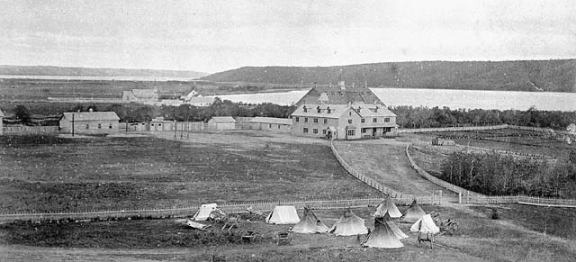
Why This Issue?
The Catholic Church’s involvement in the Indian Residential Schools is a deeply controversial issue. For more than 120 years, tens of thousands of Aboriginal children were sent to Indian Residential Schools funded by the federal government and run by the churches. They were taken from their families and communities in order to be stripped of language, cultural identity and traditions. The federal government’s attempt to wipe out Aboriginal cultures failed. But it left an urgent need for reconciliation between Aboriginal and non-Aboriginal peoples.
Contents
Backgrounder
- Brief History of Indian Residential Schools
- Catholic Statements of Regret on the Former Residential Schools
Resources
Below are links to various sources that provide a more nuanced account of the IRS issue than has been readily available in the popular media to date. Our hope is that, as the truth and reconciliation process continues to move forward since the Vancouver Event, these sources will be of value to those who are interested in a deeper understanding of the historical and cultural realities of the Confederation era in Canadian history, and the tragic consequences of a national vision which did not respect particular communities and individuals.
Backgrounder
Source: Website of the Canadian Conference of Catholic Bishops
Brief History of Indian Residential Schools
Catholic involvement in the foundation and operation of Indian residential schools is part of a long tradition of Catholic engagement in education, health and spiritual ministry, both to Indigenous and non-Indigenous Canadians.
The Indian residential school system was consolidated by the federal government in the 19th century, sustained from then on mostly by government funds, overseen by government officials and run primarily by various Christian churches, including some dioceses and religious communities within the Catholic Church. The Indian residential school system was rooted, in principle, in the government’s obligation to provide education to Indigenous children; in practice, however, the policy was often aimed at assimilating a population often misperceived as merely an obstacle to the nation’s progress.
In recent decades, the human costs of the Indian residential school system have come to light, even if they are not yet fully understood. While many former students and staff have spoken positively of their experiences at specific schools, many others speak today of far more painful memories and legacies, such as prohibitions about Aboriginal languages and cultural practices as well as cases of emotional, physical and sexual abuse.
Catholic Statements of Regret on the Former Residential Schools
The Catholic community in Canada has a decentralized structure. Each Diocesan Bishop is autonomous in his diocese and, although relating to the Canadian Conference of Catholic Bishops, is not accountable to it.
Approximately 16 out of 70 Catholic dioceses in Canada were associated with the former Indian Residential Schools, in addition to about three dozen out of over one hundred Catholic religious communities. Each diocese and religious community is corporately and legally responsible for its own actions. The Catholic Church as a whole in Canada was not associated with the Residential Schools, nor was the Canadian Conference of Catholic Bishops.
In a brief submitted to the Royal Commission on Aboriginal Peoples in November 1993, the Canadian Conference of Catholic Bishops acknowledged that “various types of abuse experienced at some residential schools have moved us to a profound examination of conscience as a Church.” (Saskatoon Conference)
Already in 1991, Canadian Catholic Bishops and the leaders of men’s and women’s religious communities had issued a statement that “We are sorry and deeply regret the pain, suffering and alienation that so many experienced” at the Residential Schools.
There have been, and continue to be, numerous initiatives by Catholic agencies and institutions in Canada to help heal the sufferings of the Aboriginal Peoples. The process of healing and reconciliation is ongoing.
